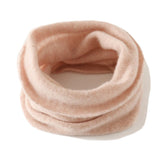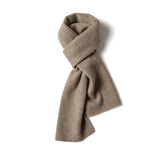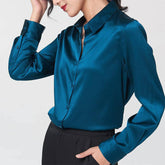Ist Seide atmungsaktiv?
Sie fragen sich, ob Seide atmungsaktiv ist? Die Antwort lautet: Ja! Seide ist ein leichter, luxuriöser Stoff, der die Luft zirkulieren lässt und sich daher hervorragend für warmes Wetter eignet. Sie trägt zur Temperaturregulierung bei und hält Sie im Sommer kühl und im Winter kuschelig warm. In diesem Leitfaden erklären unsere Seidenexperten, warum Seide atmungsaktiv ist, was ihre Luftzirkulation beeinflusst und welche Vorteile das Tragen und Verwenden von Seide das ganze Jahr über bietet.
Ist Seide atmungsaktiv?


Ja, Seide ist eine Naturfaser und ein atmungsaktiver Stoff. Ihre besondere Struktur ermöglicht optimale Luftzirkulation. Die glatten Fasern leiten Feuchtigkeit ab, lassen Wärme entweichen und halten Sie gleichzeitig kühl.
Bei Materialien wie Polyester sind atmungsaktive Eigenschaften nicht unbedingt erforderlich, da Polyester Wärme und Feuchtigkeit auf der Haut speichert. Seidenprodukte helfen hingegen, die Temperatur zu regulieren und haben feuchtigkeitsableitende Eigenschaften. Daher ist Seide die erste Wahl für heißes Klima. Seide hält kühl und ist die perfekte Wahl für den Sommer.
Was macht Seide zu einem atmungsaktiven Stoff?
Da Seide zu den atmungsaktivsten Stoffen für heißes Klima zählt, fragen Sie sich vielleicht, warum diese Sommerkleidung so kühl ist. Die Atmungsaktivität von Seide beruht auf ihrer Faserstruktur. Seidenfasern sind lang und enthalten mikroskopisch kleine Löcher, die Luft und Feuchtigkeit leicht durchlassen. Diese Atmungsaktivität wird durch das Vorhandensein von Fibroin, einem Protein, das den Kern der Seidenfasern bildet, verbessert.
Die Kombination dieser Faktoren ermöglicht es diesem natürlichen Stoff, Feuchtigkeit effizient aufzunehmen und von der Haut abzuleiten. Seide fühlt sich also nicht nur luxuriös auf der Haut an, sondern schützt Sie auch auf natürliche Weise vor Überhitzung!
Maulbeerseide, eine der hochwertigsten Seidenarten, die Feuchtigkeit ableitet, ist besonders für ihre atmungsaktiven Eigenschaften bekannt. Die Seidenraupen, die diese Seide produzieren, ernähren sich hauptsächlich von nährstoffreichen Maulbeerblättern und erzeugen so weiche, leuchtende und feuchtigkeitsregulierende Fasern. Daher ist Maulbeerseide im Sommer ein beliebter Stoff für atmungsaktive Kleidung und Bettwäsche, der besser als Baumwolle und Leinen geeignet ist.
Was kann die Atmungsaktivität von Seide beeinträchtigen?


Obwohl Seide ein herrlich luxuriöser Stoff ist, gibt es einige Dinge, die ihre Atmungsaktivität beeinträchtigen können:
- Webart und Gewicht: Die Webart und das Gewicht (gemessen in Momme) von Seide können die Atmungsaktivität beeinflussen. Beispielsweise sind leichte Seiden wie Chiffon oder Habotai im Allgemeinen atmungsaktiver als schwerere Seiden wie Satin oder 40-Momme-Seide. Dies liegt daran, dass die glatten Seidenfasern lockerer gewebt sind.
- Stoffmischungen: Die Mischung von Seide mit anderen Naturfasern wie Leinen oder Baumwolle kann die Atmungsaktivität verbessern. Diese Mischungen der Seideneigenschaften sorgen im Vergleich zu reinem Seidenstoff für eine bessere Luftzirkulation und einen besseren Feuchtigkeitstransport.
- Passform der Kleidungsstücke: Auch die Passform von Seidenkleidung kann sich auf die Atmungsaktivität auswirken. Locker sitzende Seide ist eine ausgezeichnete Wahl, da sie die Luft ungehindert um den Körper zirkulieren lässt. Dadurch wird sichergestellt, dass die Seide weder Wärme speichert noch auf der Haut klebt. Seide kann in verschiedenen Passformen getragen werden.
Die Vorteile und Anwendungen von Seide
Abgesehen davon, dass Seide atmungsaktiver ist als andere Stoffe, bietet dieser hochwertige Stoff jede Menge Vorteile:
- Feuchtigkeitsableitend: Seide ist außerdem leicht und leitet Feuchtigkeit hervorragend von der Haut ab. Insbesondere bei heißem Wetter oder körperlicher Aktivität ist dies der richtige Stoff, um Sie trocken zu halten.Diese Eigenschaft ist besonders hilfreich, wenn Sie leicht schwitzen. Seide könnte also genau der hochwertige Stoff sein, nach dem Sie gesucht haben!
- Thermoregulation: Seide hat die besondere Fähigkeit, die Körpertemperatur zu regulieren, und eignet sich daher hervorragend für Sommer und Winter. An heißen Sommertagen hält sie kühl, während Seide in den kühleren Monaten auch wärmt.
- Hautfreundlich: Seide ist hypoallergen und sanft zu empfindlicher Haut. Daher ist sie eine hervorragende Wahl bei Allergien oder Hauterkrankungen. Ihre glatte Textur reduziert die Reibung auf der Haut und beugt so Reizungen vor.
- Flexible Anwendungen: Von luxuriösen Seidenkissenbezügen für gesundes Haar und Haut bis hin zu eleganter Seidenkleidung für formelle Abendessen – Seide wird häufig für alle Anlässe verwendet. Seidenbettwäsche ist außerdem beliebt, weil sie besonders bequem ist und temperaturregulierende Eigenschaften besitzt.
Slipintosoft: Ein unvergesslicher Seidensommer
Jetzt wissen Sie, dass Seide hoch atmungsaktiv ist, Feuchtigkeit absorbieren und Ihre Temperatur regulieren kann! Darüber hinaus ist Seide auch unglaublich stylisch. Das macht sie zu einer eleganten Option, Seide im Sommer zu tragen.
Wenn die Monate heißer werden, sollten Sie wirklich darüber nachdenken, leichte Seidenkleidung zu tragen oder sich luxuriöse Seidenbettwäsche, wie ein brandneues Seidenkissenbezug. Der Stoff ist leicht und atmungsaktiv und hält Sie an wärmeren Tagen kühl und komfortabel. Entdecken Sie Slipintosofts Kollektion an Herren- und Seidenkleidung für Damen, und mehr!
Häufig gestellte Fragen zum Thema „Ist Seide atmungsaktiv?“
Ist Seide atmungsaktiver als Baumwolle?
Seide ist im Allgemeinen weniger atmungsaktiv als Baumwolle. Im Vergleich zu Seide und Baumwolle ermöglicht Baumwolle eine bessere Luftzirkulation und ist daher atmungsaktiver. Seide hat jedoch dennoch gute feuchtigkeitsableitende Eigenschaften, was sie unter bestimmten Bedingungen angenehm macht.
Bringt Seide Sie zum Schwitzen?
Seide bringt Sie nicht unbedingt zum Schwitzen. Tatsächlich kann sie, genau wie Baumwolle, zur Temperaturregulierung beitragen, indem sie Feuchtigkeit vom Körper wegleitet. Dies sorgt besonders im Sommer für ein angenehmeres Tragegefühl.
Ist es besser, in Baumwolle oder Seide zu schlafen?
Seide ist oft besser zum Schlafen, wenn Sie zwischen Baumwolle und Seide wählen. Die Entscheidung zwischen Seide und Baumwolle ist jedoch immer eine persönliche. Seide ist glatt und kann Ihre Körpertemperatur regulieren. Sie sollten jedoch auch wissen, dass Baumwolle atmungsaktiv und pflegeleicht ist. Bio-Baumwolle ist daher eine gute Wahl für alle, die Wert auf Funktionalität legen.
Zurück nach oben: Ist Seide atmungsaktiv?










